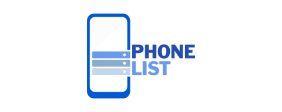The world of internet marketing is full of terms and concepts that can be confusing for beginners.
One of these concepts is conversion. In this article, we will take a detailed look at the topic of
“conversion in internet marketing” and examine definitions, calculations, important metrics and optimization methods.
Definition: What is a conversion?
A conversion describes the vk database successful transformation
of a website visitor into a customer or another desired automatic placement telegram analytics target
state, such as signing up for a newsletter or participating in a survey. A conversion is usually linked to a specific action by the visitor that is of value to the company .
The Importance of Conversion Rates in Online Marketing
Conversion rate is one of the most important metrics in online marketing as it provides insight into
how effective a marketing strategy or website is in converting visitors into customers. A high
conversion rate is the goal of every online marketer as it means that the resources deployed are being used efficiently and the desired results are being achieved.
**Calculating the conversion rate: formula and example**
Calculating the conversion rate is relatively simple. It is expressed as a percentage and is calculated by
dividing the number of conversions by the number of website visitors, multiplied by 100:
Conversion rate = (number of conversions / number of website visitors) * 100
For example, if a website had 10,000 visitors in a b2b reviews month and made 200 sales, the
conversion rate is:
(200 / 10,000) * 100 = 2%
This means that 2% of website visitors made a conversion (in this case a purchase).
Important metrics related to conversion
- Click-through rate (CTR): The CTR indicates how many users who saw an ad or link actually
- clicked on it. A high CTR indicates that the ad or link is appealing and relevant to users.
- Bounce rate: The bounce rate describes the proportion of users who visited a website but left
- without interacting. A high bounce rate can be an indicator that the website does not meet user
- expectations or that user-friendliness needs to be improved.
- Time on site: Time on site is the average amount of time a user spends on a website. A longer time on site may indicate that the content is interesting and relevant to users.
- Bounce rate: The bounce rate is the percentage of users who left the website after visiting a particular page. A high bounce rate on a particular page may indicate that the site is not meeting user expectations or that there are technical issues that need to be addressed.

